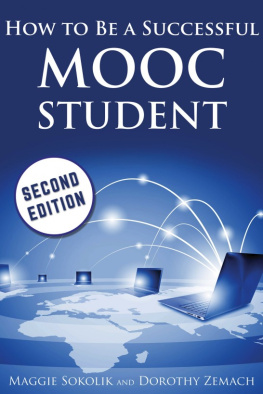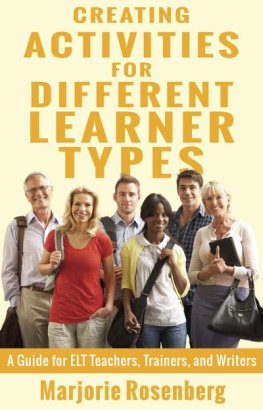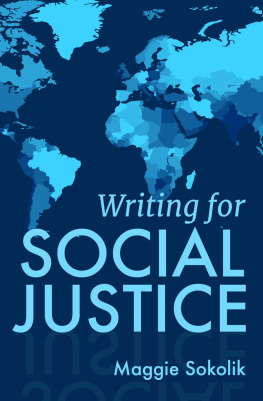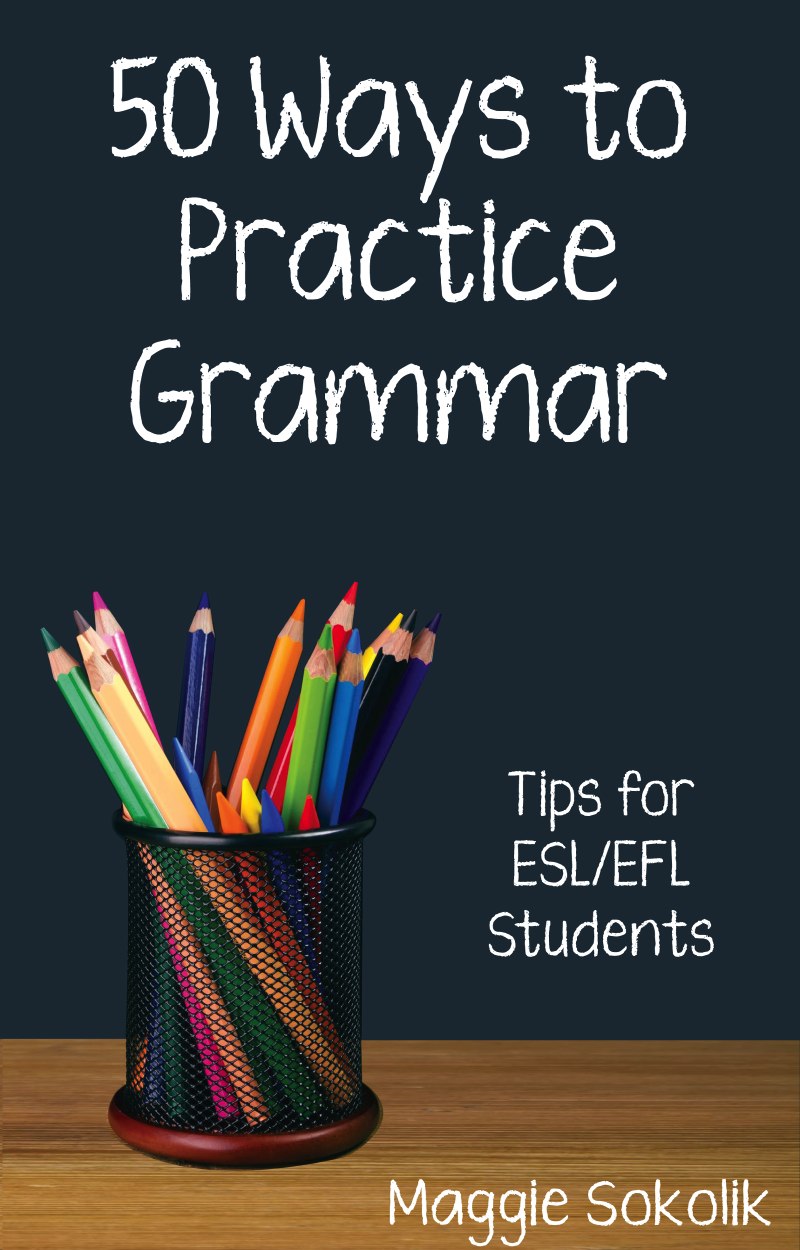Fifty Ways to Practice Grammar
Tips for ESL/EFL Students
Maggie Sokolik
Contents
0 Ways to Practice Grammar : Tips for ESL/EFL Students
Copyright 2014 by Maggie Sokolik
A ll rights reserved . No part of this publication may be reproduced, stored in or introduced into a retrieval system, or transmitted, in any form, or by any means (electronic, mechanical, photocopying, recording, or otherwise) without the prior written permission of the copyright owner. Dramatic works contained within this volume are intended only as reading material, and their inclusion does not imply the granting of performance licenses, which must be arranged through the author.
E dited by Dorothy E. Zemach . Cover design by DJ Rogers.
Published in the United States by Wayzgoose Press.
How to Use This Book
I t takes many hours to become proficient at anythinga sport, a hobby, a musical instrument, or a foreign language. Many thousands of hours, in fact! For a student of English, this can seem difficult to accomplish, especially if your only opportunity to study English is in the classroom.
This book will help you learn and practice English grammar, both inside and outside the classroom. If you are already taking English classes, some of the tips will help you get more out of your classes. If youre not taking English classes and even if you are other tips will give you ideas to try on your own. Not every idea will work for every student. Thats why there are fifty. We feel sure that many of the ideas presented here will bring you results if you try them sincerely.
Here is a suggested method for using this book:
- Read through all of the fifty tips without stopping.
- Read through the tips again. Choose five or six that you think might work for you. Decide when you will try them, and for how long.
- Try to choose different types of ideas: some for practicing accuracy, some for understanding new structures, some for reviewing familiar ones. Also, choose some that you can practice with a friend or language learning partner, and some that you can do alone. For your convenience, the tips are divided into two categories: Awareness exercises and Practice activities. Of course, you do not have to do the exercises exactly as written. For example, if you have someone to work with, do some of the reading and writing activities as speaking activities.
- Each time you use one of the ways, make a note about how well it worked for you and why. Remember that most of the tips will work best if you practice them several times (or even make them a habit). Dont try a tip only once and decide its no good for you. Give the tips you try a few chances, at least.
- Every few weeks, read through the tips again, and choose some new ones. Discontinue using any methods that are not working for you.
The most important advice, though, is to actually do the suggestions you read about here. Wishing is not working. If you dont do the work, you wont see the results.
Finally, consider trying some of the other books in our Fifty Ways to Practice series. No one skill in English is really separate from the others. Speaking, listening, reading, writing, vocabulary, and grammar are all connected. Improving in one area will almost always bring improvements to other areas too.
You can find the worksheets to use with some of the tips at: http://anglofile.com/50ways/ . You are free to print and use these worksheets.
Introduction
W elcome to 50 Ways to Practice Grammar! If youve been studying grammar for a while, you might find that you are stuck in just a few ways of studying, or at a certain level of achievement. This book will help you explore new and different ways to study and, more importantly, use English grammar.
What are some keys to learning grammar?
- Keep at it! It takes a long time to master all of English grammar. The good news is that you dont have to be perfect. You will get better and better if you keep practicing. Think about how musicians learn to play a songthey dont study it from a book until its perfect. They play in order to make it better. You should do the same: practice makes perfect. (It may help to remember that native speakers of English make grammar mistakes too and that doesnt stop them from communicating in English.)
- Become aware of the grammar in the language around you. Grammar isnt just a bunch of charts and examples in a book. Grammar is the way people use a language. This book will help you become aware of the grammar that exists in the real world grammar on signs, in writing, in advertisements, on television, and more. Awareness of how grammar works in the real world will help you understand those charts and rules in books.
This book lists 50 ways (and one bonus tip!) to notice, understand, and practice grammar. We hope that after you use and practice the tips in this book, you will think of even more ways of your own.
A wareness exercises help you to notice and focus on grammar as it is used in everyday English. As you complete the awareness exercises, think about what rules or general ideas are behind what you are reading.
1. Start by Noticing. As you read in English, get into the habit of noticing new grammar structures. Whether its an unusual use of a verb tense, or the way that an article or preposition is used, notice it. It might help also to keep a journal either a paper one, or a file on your computer. Copy down these new grammar structures that you notice in your reading. You might want to copy the sentence before and after the new structure, so you can see the grammar in context.
. Whats Your Biggest Problem? Think about your writing or speaking in English. Write down the areas you have the most trouble with; for example, prepositions, articles, or using plurals correctly. After youve written them down, choose one area to focus on first. Learn all you can about that area. Read about it, make flashcards, do some exercises online, or practice it by writing in a journal. Once you have focused on it for a while, move on to the next most important item on your list.

. Parts of Speech . Do you know the names for the parts of speech? Just like a professional mechanic needs to know the names of the parts in an automobile, or a doctor needs to know the parts of the body, an English learner should know the parts of speech, or grammar terms. Make sure you know the basic ones: noun, verb, adjective, adverb, article, preposition, and conjunction. There are many others. If you dont know them, use a search engine and look up English parts of speech and learn about any you dont know.
. Active /Passive. Find a sentence in something you have read recently: a story, newspaper article, or magazine article. Identify the sentence as either active or passive. If its active, see if you can rewrite it as passive; if passive, see if you can rewrite as active (not all sentences can be easily or sensibly changed). Write an explanation of which is the better choice, and why the writer might have chosen to write it that way. For example:














